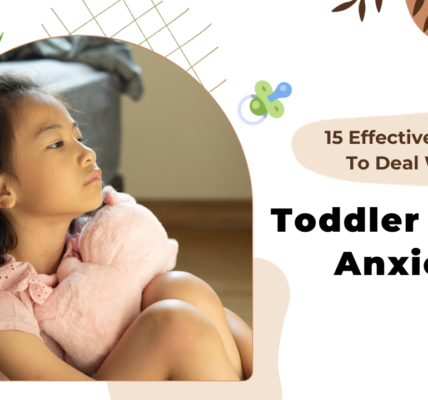As parents, one of the significant milestones we witness is when our toddlers start to outgrow their daytime naps. The shift from regular napping to staying awake during the day is a crucial developmental phase. In this article, we’ll explore the signs that indicate when do kids typically stop napping and provide valuable tips on managing this transition.
Signs that Your Toddler Is Ready to Stop Napping
1. Decreased Interest in Naps
Toddlers who are ready to transition away from napping may actively resist the idea of taking a nap. They might express displeasure when it’s time to nap or exhibit signs of restlessness. Parents may observe their child’s unwillingness to lie down or cooperate during naptime routines. Additionally, difficulty falling asleep during the day, even when it’s the usual naptime, can be a clear indication that the toddler is losing interest in daytime sleep.
Tips for parents:
- Pay attention to verbal and non-verbal cues indicating reluctance towards napping.
- Gradually adjust naptime routines to align with your child’s changing sleep needs.


2. Extended Night Sleep
As toddlers grow, their overall sleep patterns evolve. Instead of distributing their sleep between nighttime and daytime naps, toddlers who are ready to stop napping tend to consolidate their sleep into more extended nighttime periods. This consolidation often results in a longer and more restful night’s sleep, accompanied by increased wakefulness and alertness during waking hours.
Tips for parents:
- Monitor your child’s nighttime sleep duration and overall energy levels during the day.
- Adjust bedtime routines to ensure your toddler gets sufficient sleep during the night.
3. Age Milestones
Around the age of 3 to 4, many toddlers enter a developmental stage where their sleep needs undergo significant changes. It is during this period that the majority of children naturally start to outgrow the necessity for daytime naps. These age-related sleep patterns indicate a shift in the toddler’s internal sleep clock, aligning more with a single, extended period of nighttime sleep.
Tips for parents:
- Be aware of typical age-related sleep milestones to better anticipate your child’s changing sleep needs.
- Foster a flexible sleep routine that accommodates your toddler’s evolving sleep patterns.
Understanding these signs in detail empowers parents to navigate the transition away from napping with sensitivity and adaptability, ensuring the child’s overall well-being during this developmental phase.
Tips for Managing the Naptime Transition
1. Adjusting Bedtime
Modifying bedtime routines is crucial when transitioning a toddler away from daytime naps. With the absence of naps, it becomes essential to ensure that your child receives enough sleep during the night to compensate for the reduction in daytime sleep. As your toddler phases out napping, redistributing their sleep needs becomes essential. Adjusting bedtime allows you to provide a more extended period for nighttime sleep, helping compensate for the lack of daytime naps. This adjustment should be gradual to allow your child’s internal sleep clock to adapt. A well-managed bedtime routine creates a conducive environment for restful sleep and aids in the smooth transition away from daytime naps.
Tips for Parents:
- Gradually shift bedtime to an earlier or later time, depending on your child’s needs.
- Ensure the bedtime routine is calming and conducive to a restful night’s sleep.


2. Quiet Time
Implementing a designated period of quiet time during the day is essential, even if your toddler is no longer napping. Quiet activities during this time provide an opportunity for your child to recharge and prevent overtiredness. Quiet time serves as a substitute for traditional naps, allowing your toddler to relax and recharge without necessarily falling asleep. Engaging in calm and quiet activities, such as reading, drawing, or listening to soft music, provides a break from stimulating activities. This period helps prevent overtiredness, ensuring your child remains alert and focused during waking hours.
Tips for Parents:
- Designate a specific time for quiet activities, aligning with your child’s natural rhythms.
- Choose activities that promote relaxation and quiet engagement.
3. Consistent Routine
Maintaining a consistent daily routine is vital during the naptime transition. Predictability in daily activities helps toddlers feel secure, fostering a sense of stability. A consistent schedule for meals, play, and sleep contributes to better overall sleep habits. Consistency in routines provides a framework that supports a smooth transition away from napping. Toddlers thrive on predictability, and a consistent daily schedule helps regulate their internal body clock. This includes consistent meal times, play periods, and sleep schedules. A well-established routine communicates a sense of security to your child, making the adjustment away from napping more manageable.
Tips for Parents:
- Create a visual schedule or routine chart to help your child understand the daily sequence of activities.
- Be flexible within the routine to accommodate your child’s individual needs.
4. Monitor Behaviour
Regularly observing your child’s behaviour is crucial during the naptime transition. Watch for signs of overtiredness, as these can indicate the need for more rest. Adjusting their schedule accordingly ensures they get the sleep they require for optimal well-being. Overtiredness can manifest in various ways, such as irritability, difficulty focusing, or heightened emotional reactions. By closely monitoring your child’s behavior, you can identify patterns that signal when they may need additional rest. Adjusting their schedule in response to these signs helps maintain a balanced and healthy sleep routine.
Tips for Parents:
- Keep a daily journal to track your child’s behavior and sleep patterns.
- Be responsive to subtle cues of tiredness and adapt the schedule as needed.
Implementing these tips with sensitivity and flexibility supports a smooth transition away from napping, promoting healthy sleep habits for your toddler.


FAQs: When do Kids Stop Napping
Q1: When is the typical age for kids to stop napping?
A: Most toddlers start phasing out naps around 3 to 4 years old, but individual variations exist.
Q2: How can I ensure my child gets enough sleep without napping?
A: Adjust bedtime, introduce quiet time, and maintain a consistent routine to support healthy sleep patterns.
Q3: Is it normal for a toddler to resist napping suddenly?
A: Yes, resistance to napping can be a natural part of a toddler’s developmental stage.
Q4: Should I force my child to nap if they resist?
A: It’s generally not recommended. Instead, provide quiet time and observe their overall sleep patterns.
Q5: Are there long-term effects of toddlers skipping naps?
A: Skipping naps occasionally is normal, but consistent sleep deprivation may impact mood and behaviour.
Q6: Can I reintroduce naps if needed?
A: Yes, if your child shows signs of needing more daytime sleep, reintroducing naps is an option.
Q7: How can I create a conducive sleep environment for my toddler?
A: Ensure a comfortable, dark, and quiet sleep environment. Limit screen time before bedtime.
Q8: Are there any signs that my child still needs daytime naps?
A: If your child consistently shows signs of overtiredness, they may benefit from a short nap during the day.
Q9: Can changes in daily activities impact nap readiness?
A: Yes, changes like starting preschool or increased physical activity can influence nap readiness.
Q10: Are there any health concerns related to toddlers skipping naps?
A: If you have concerns about your child’s sleep patterns, consult with a paediatrician for personalised advice.
Conclusion
Understanding when do kids stop napping is a unique journey for each child. By recognising signs and implementing supportive strategies, parents can navigate this transition smoothly. Remember, every child is different, and flexibility in adjusting routines is key to fostering healthy sleep habits.
For more parenting insights, visit Parentology.co





